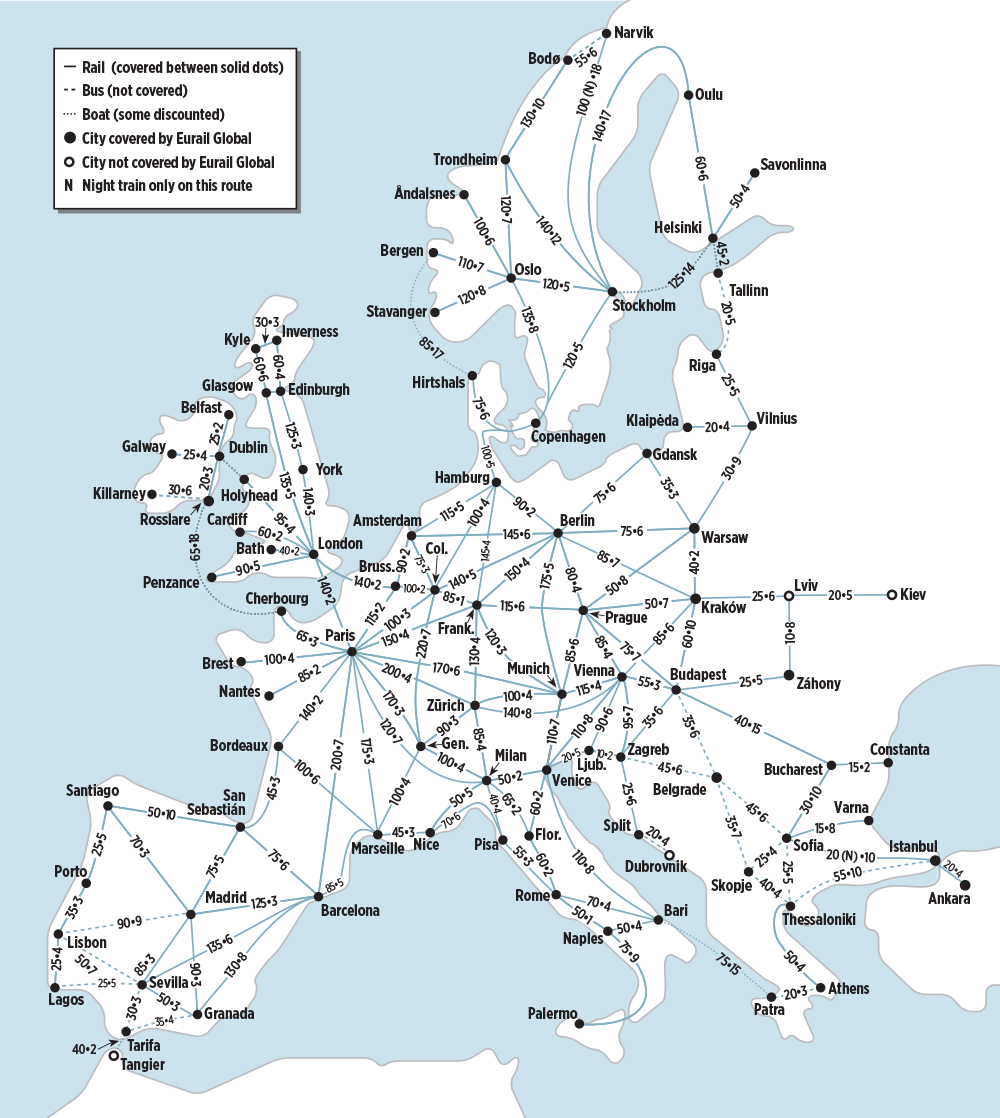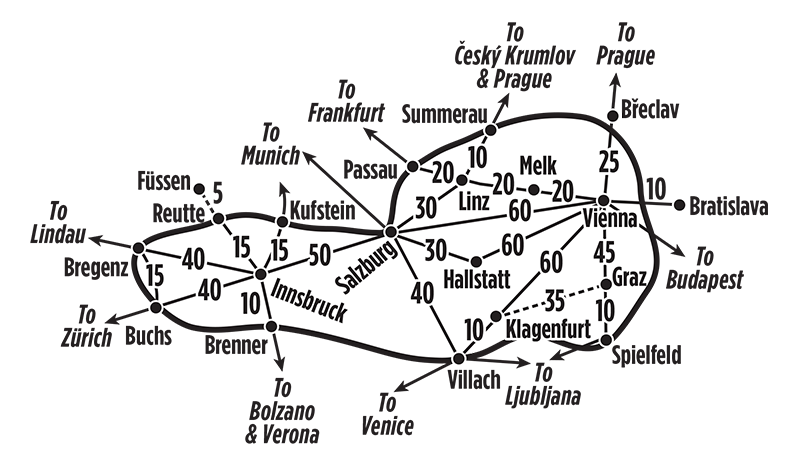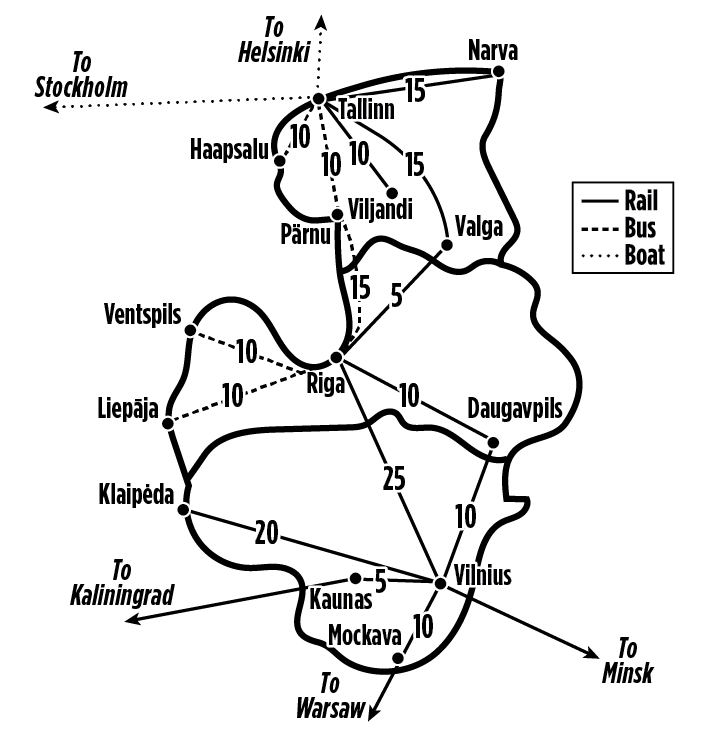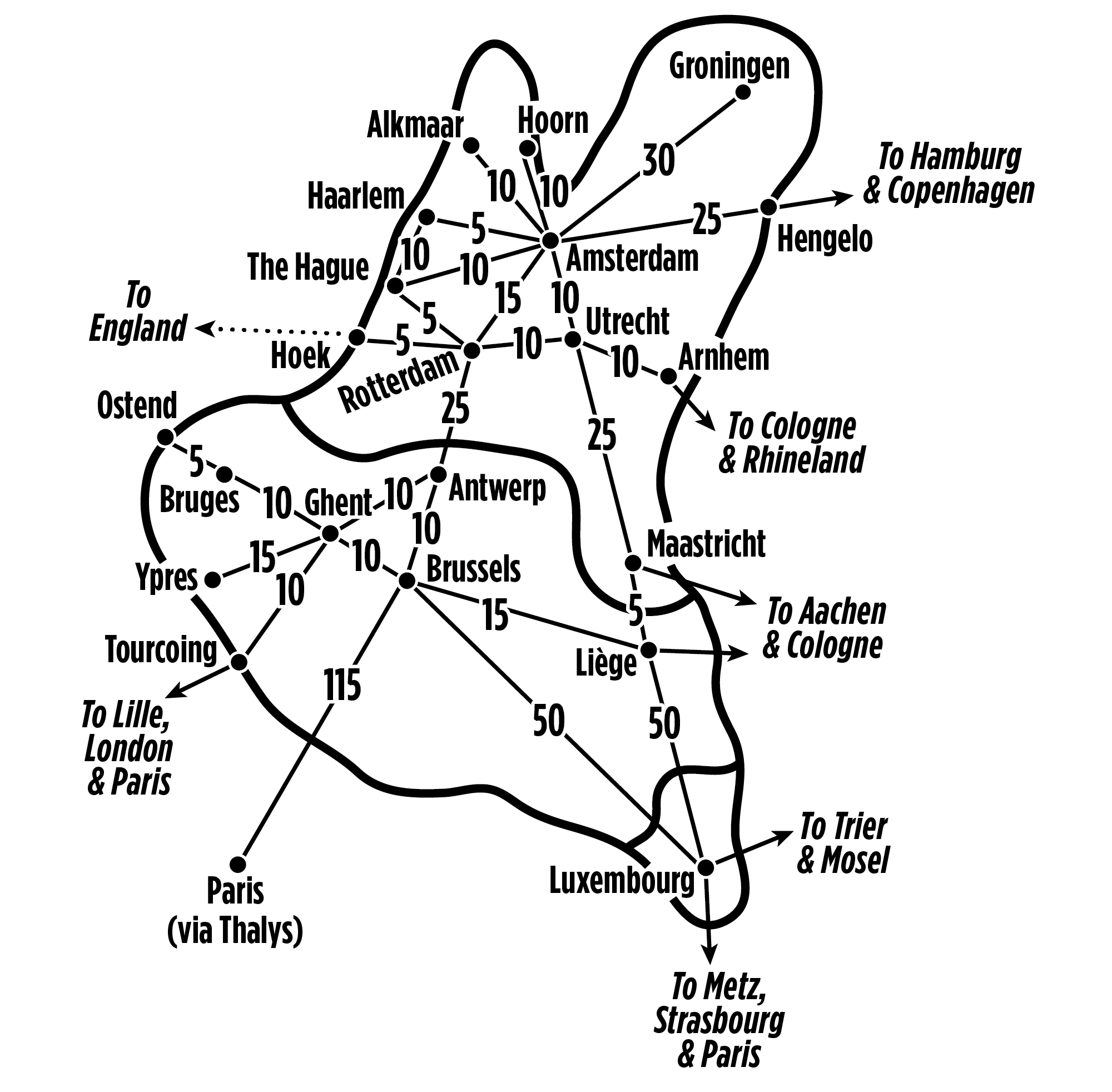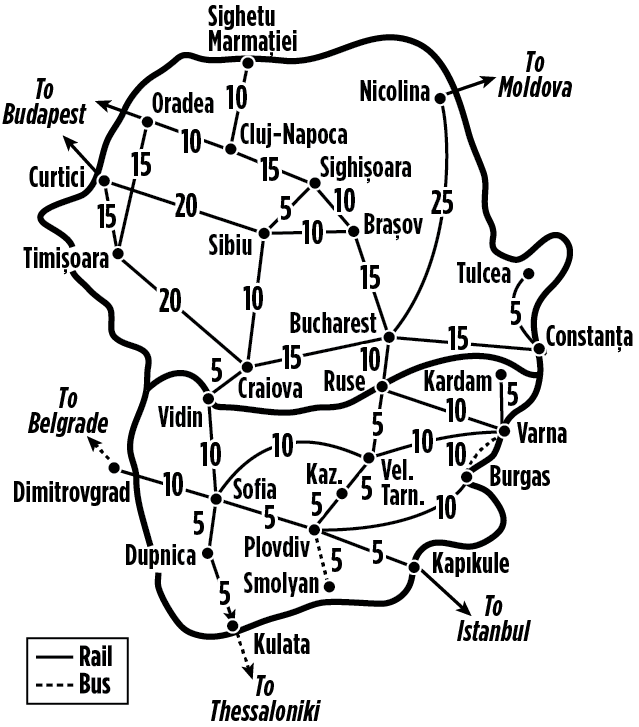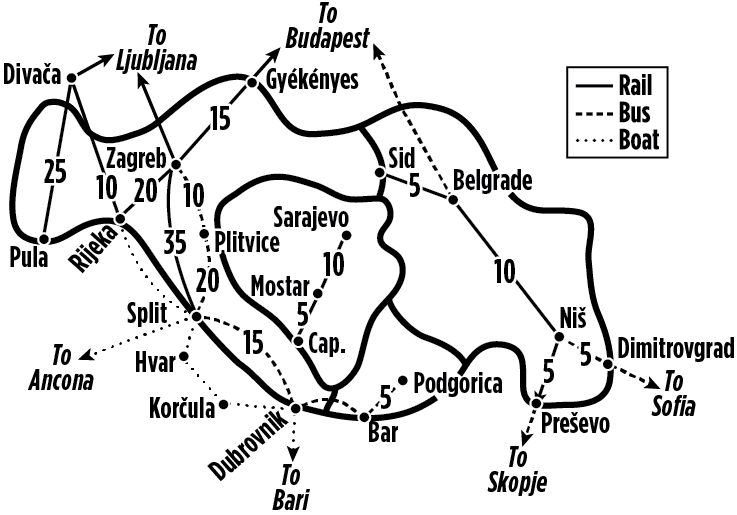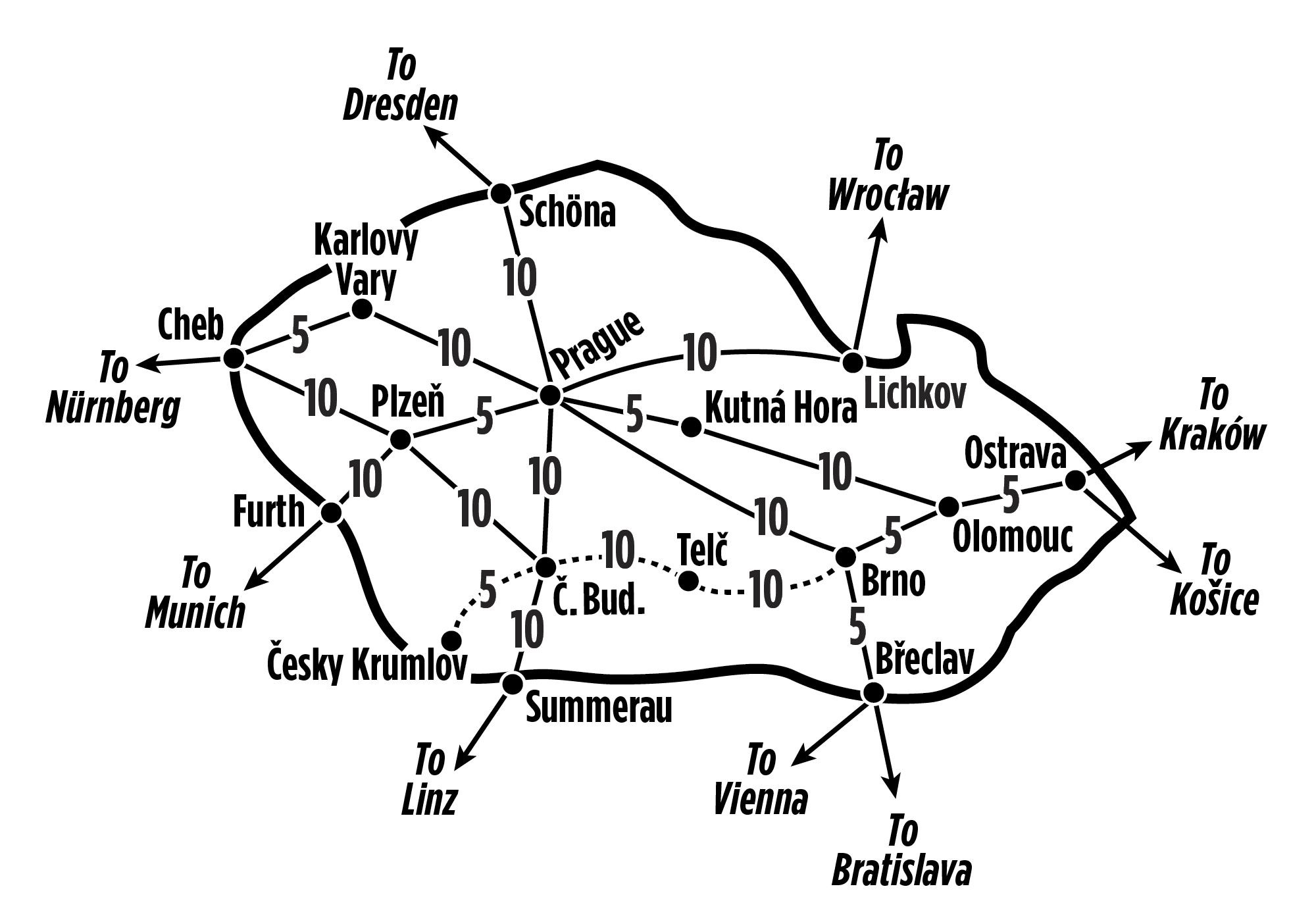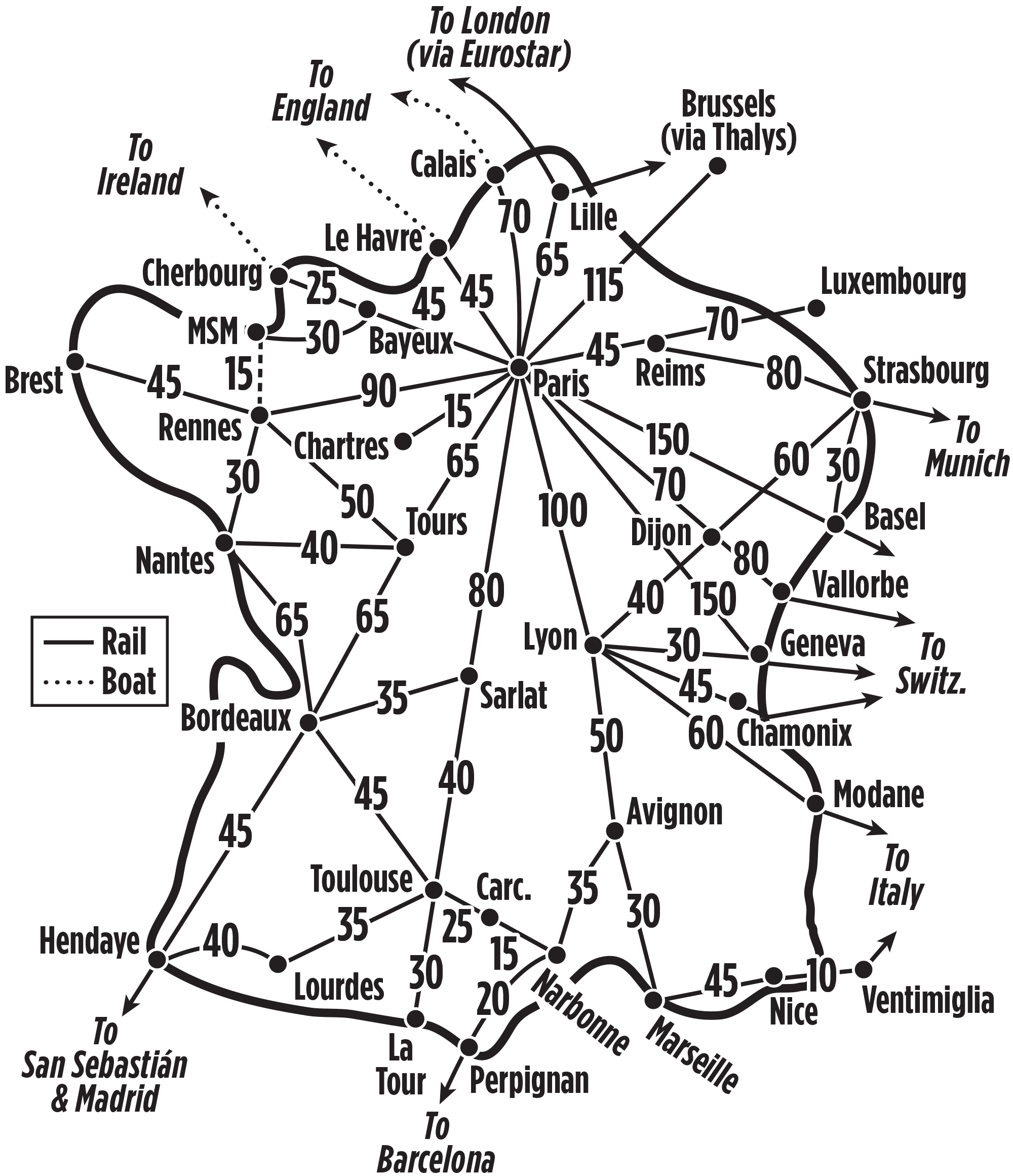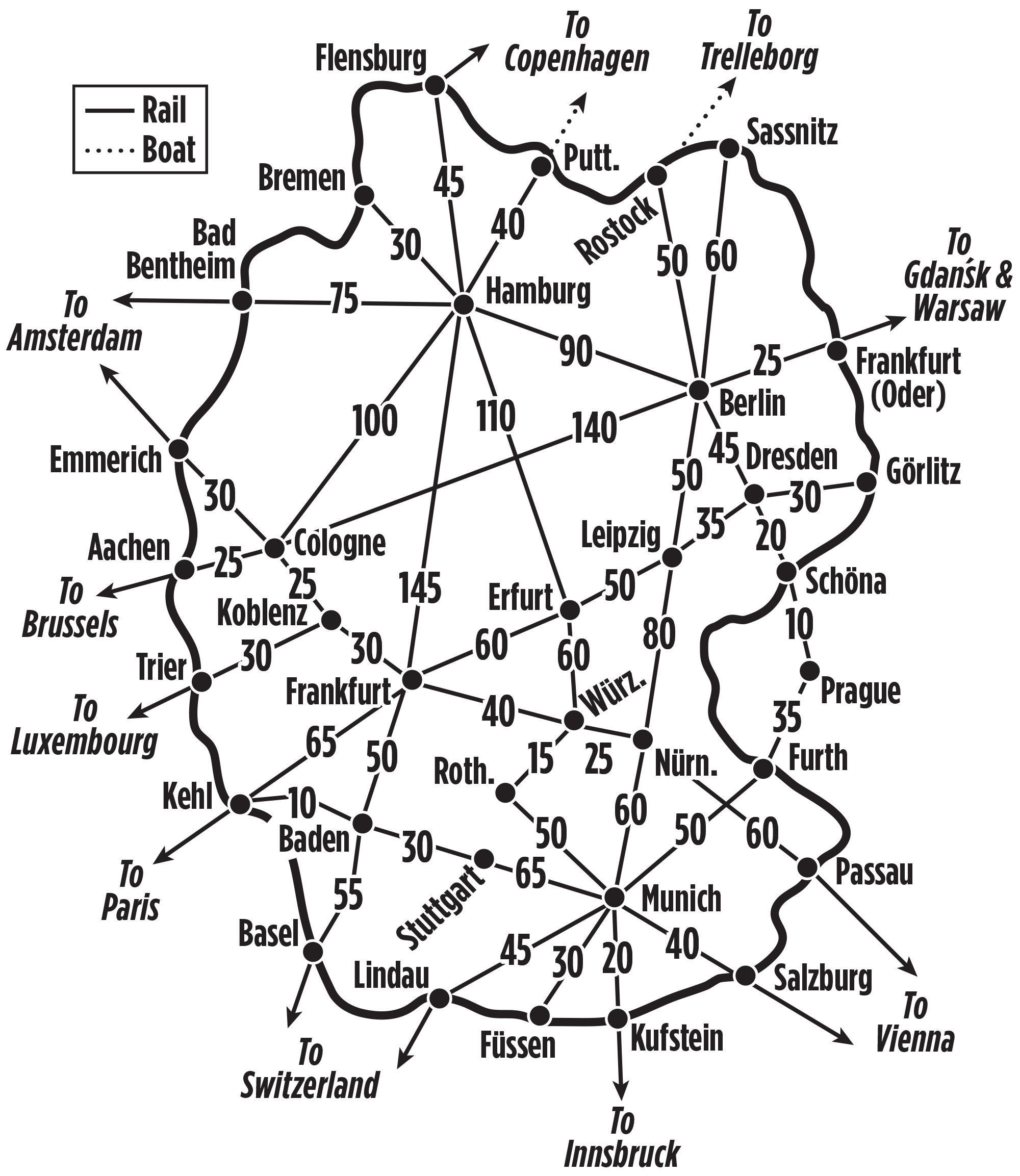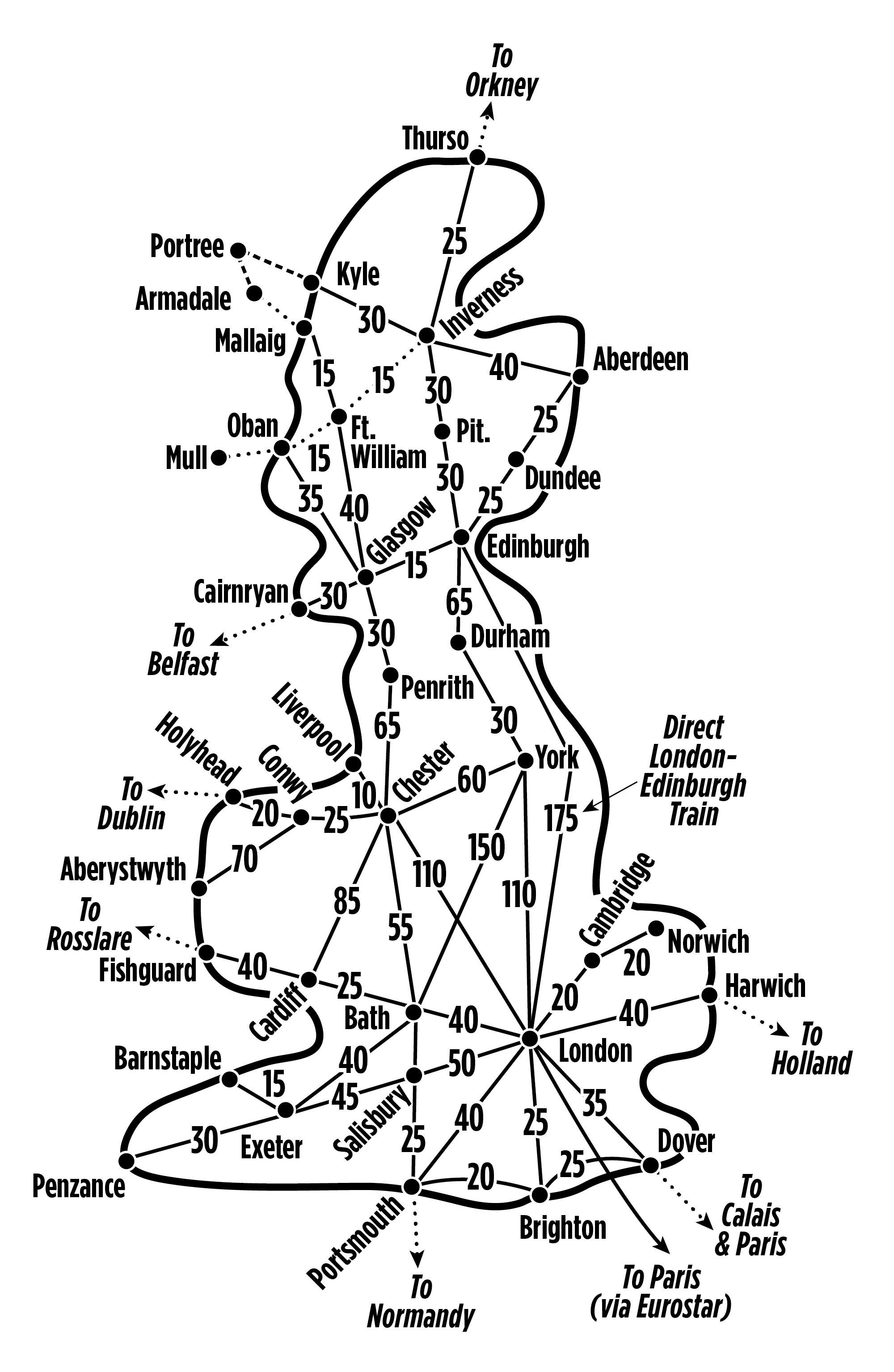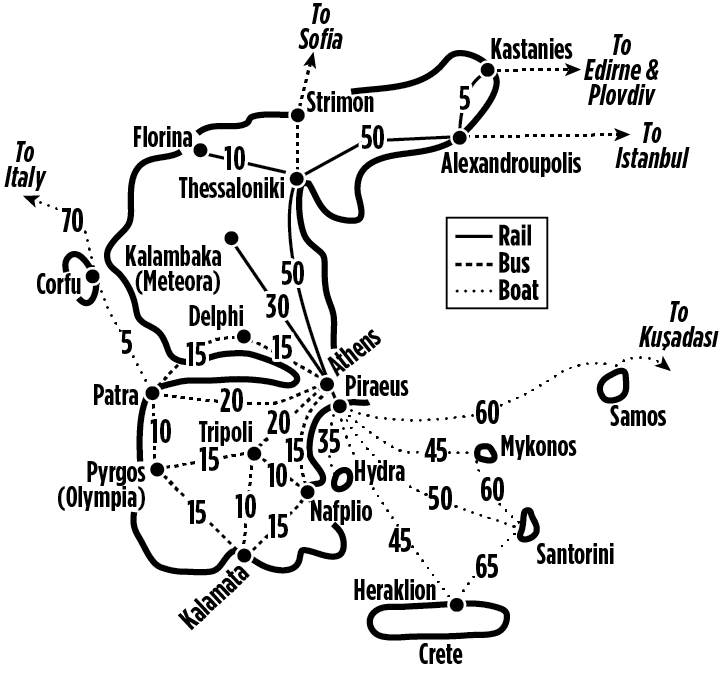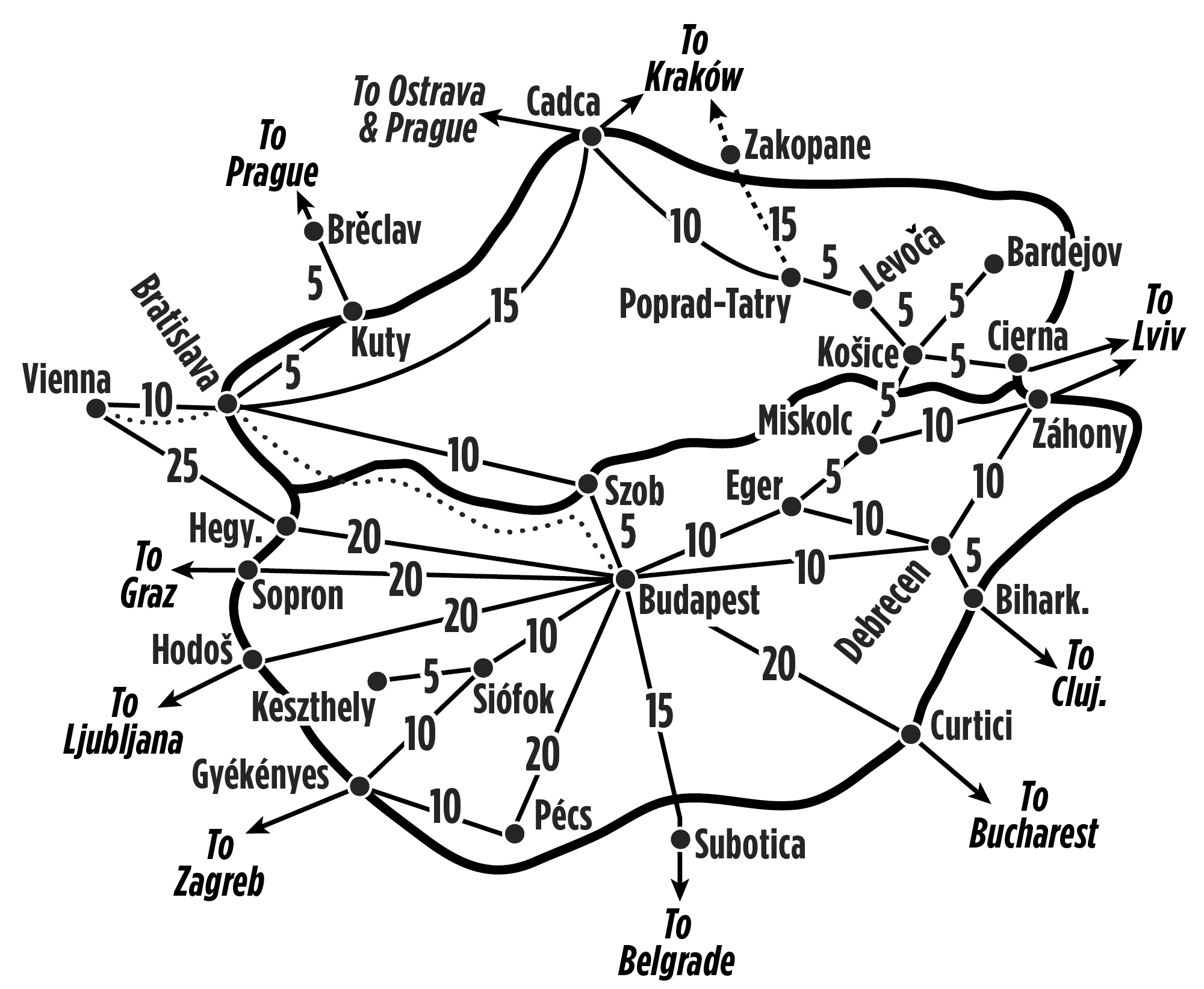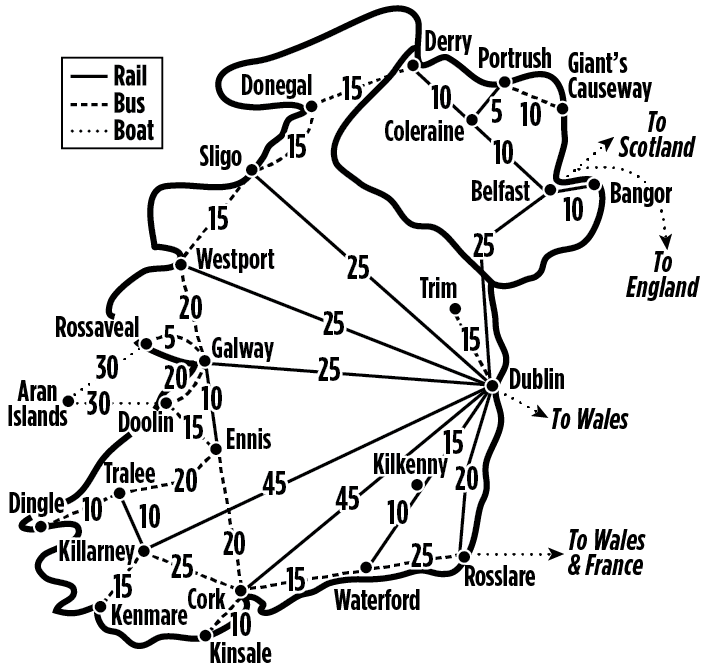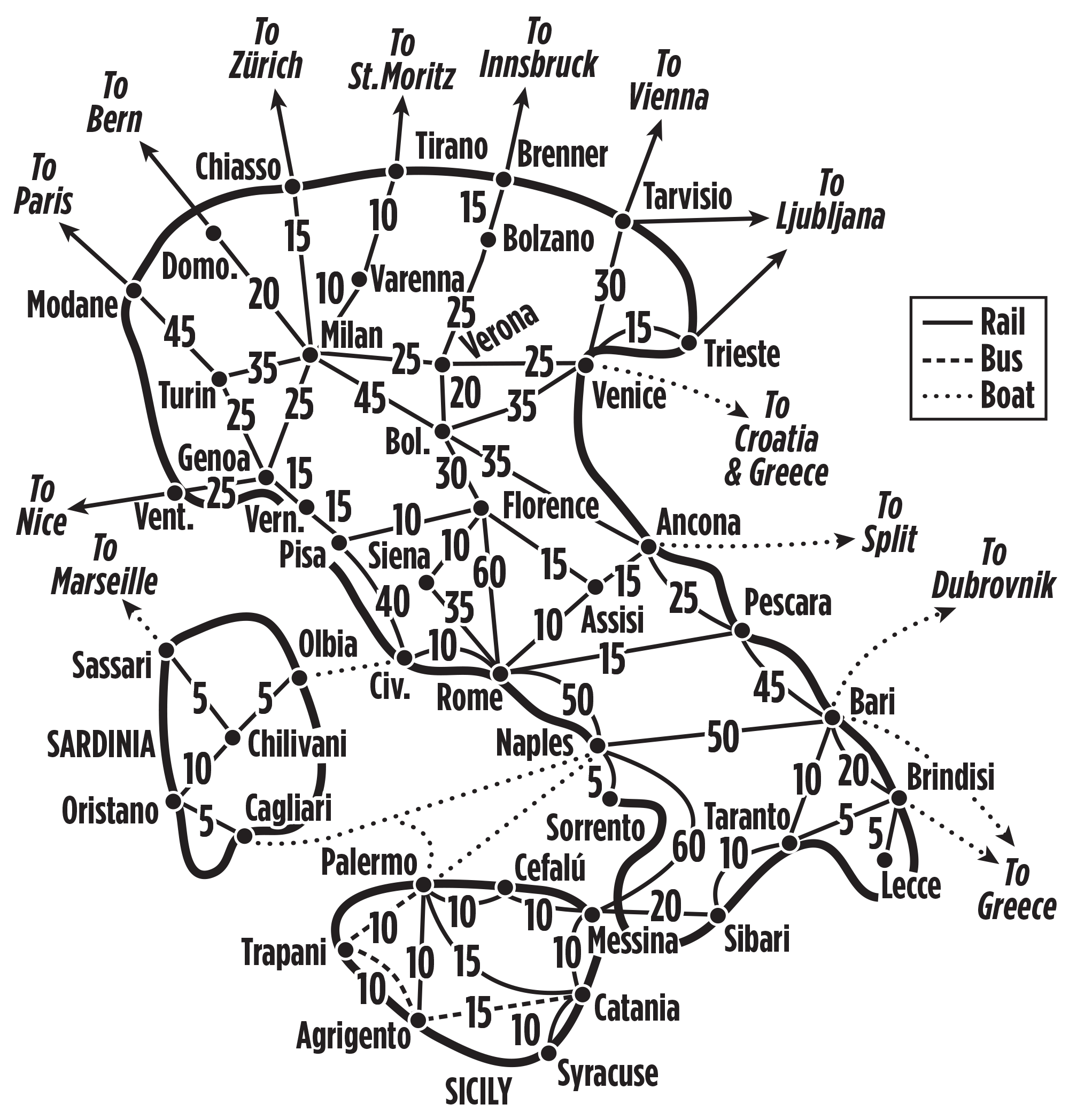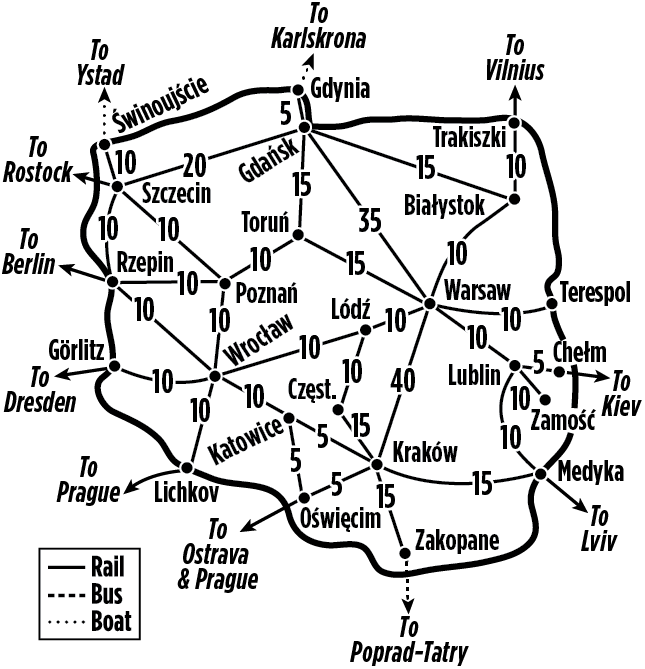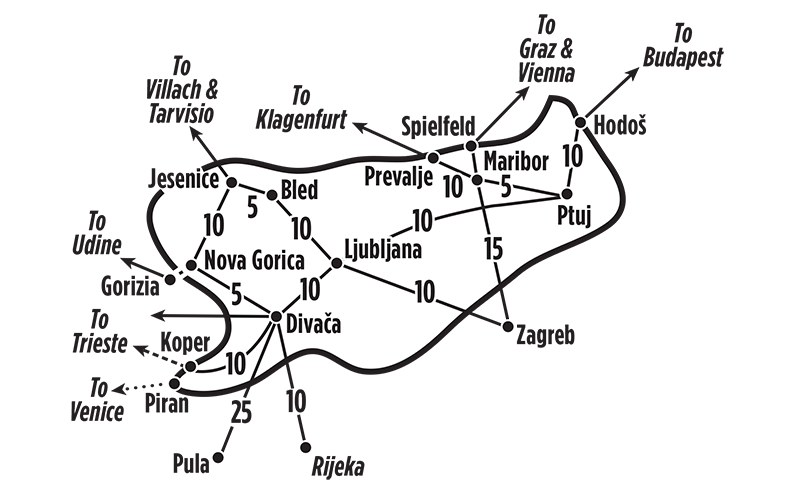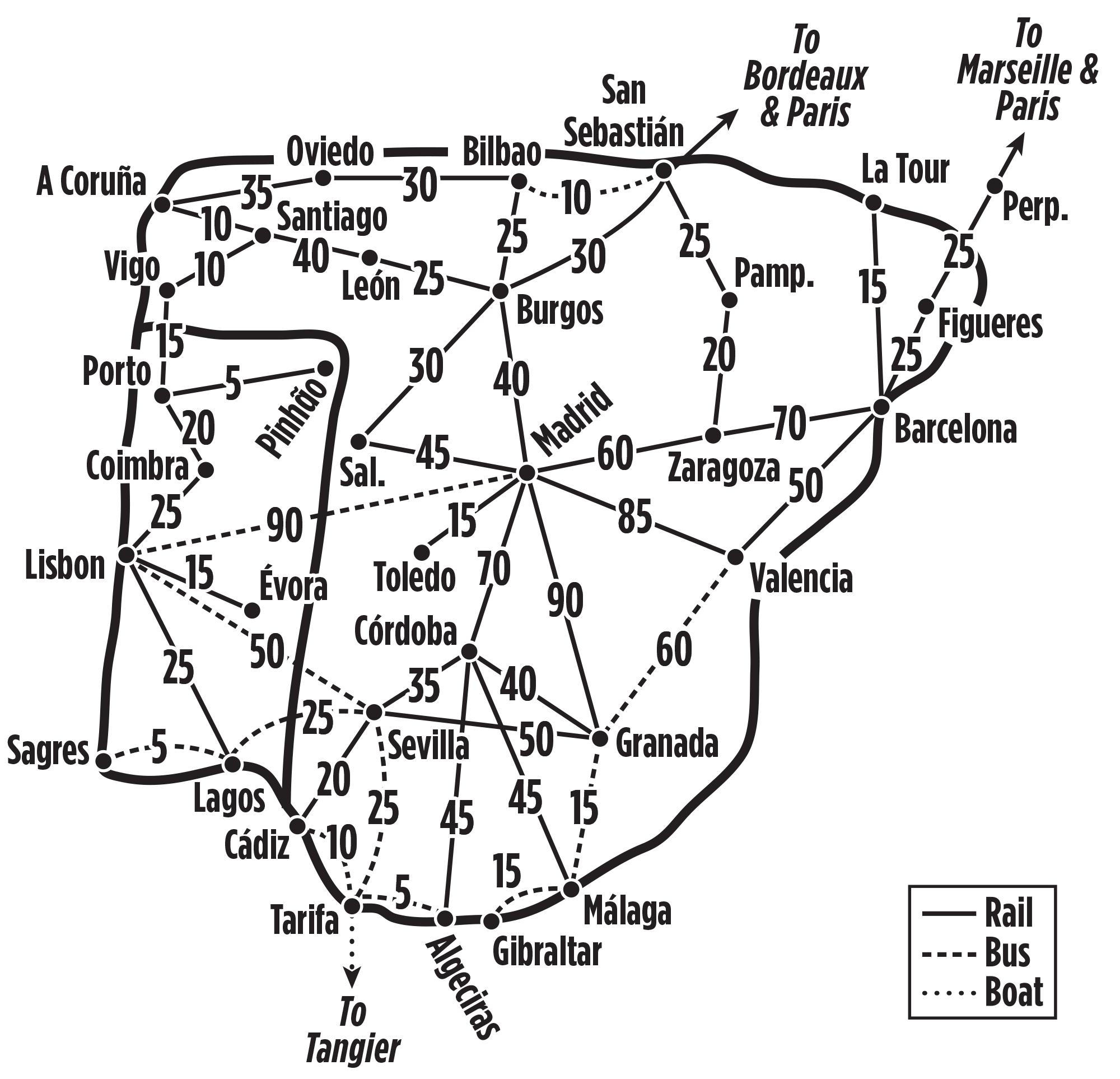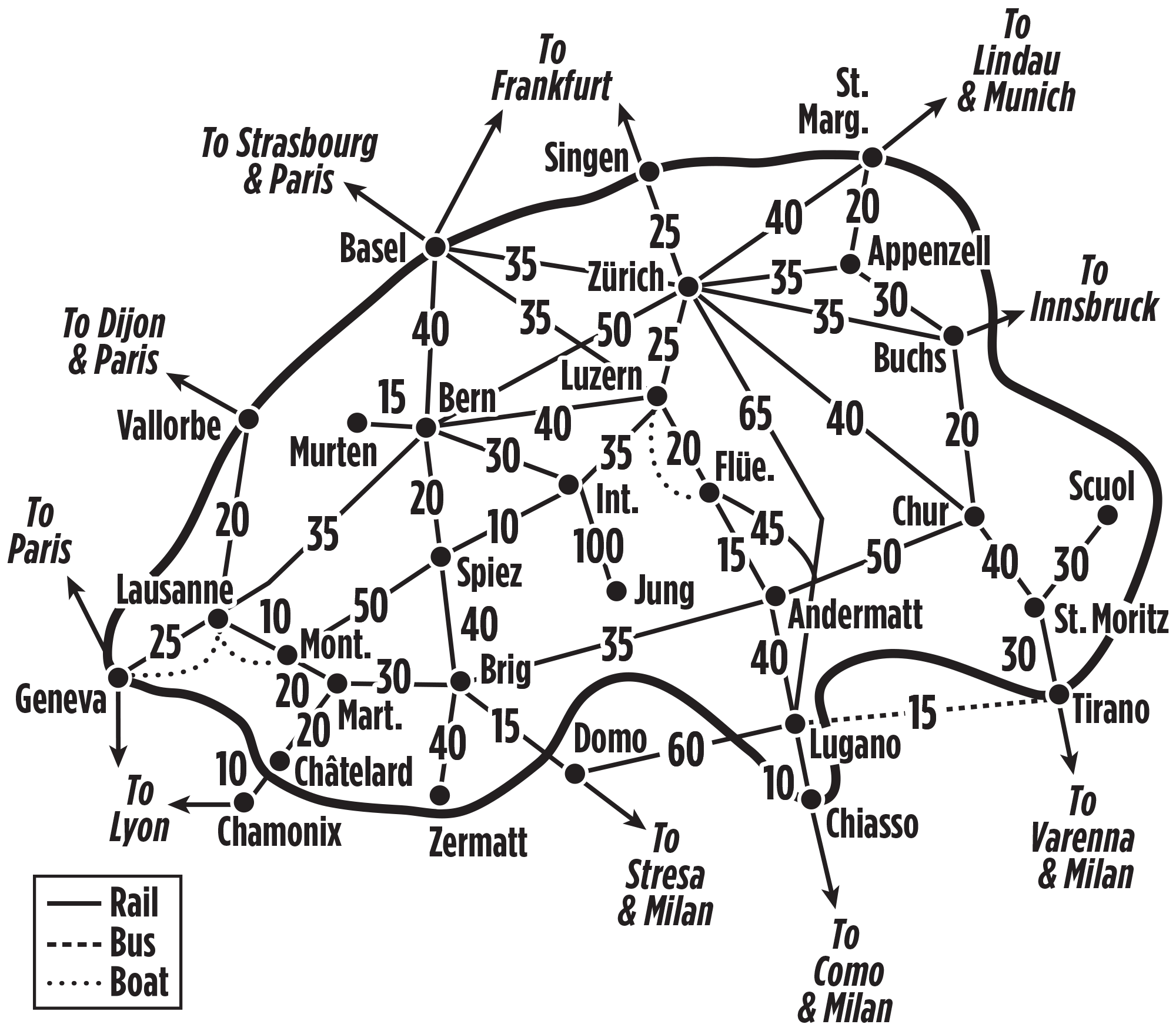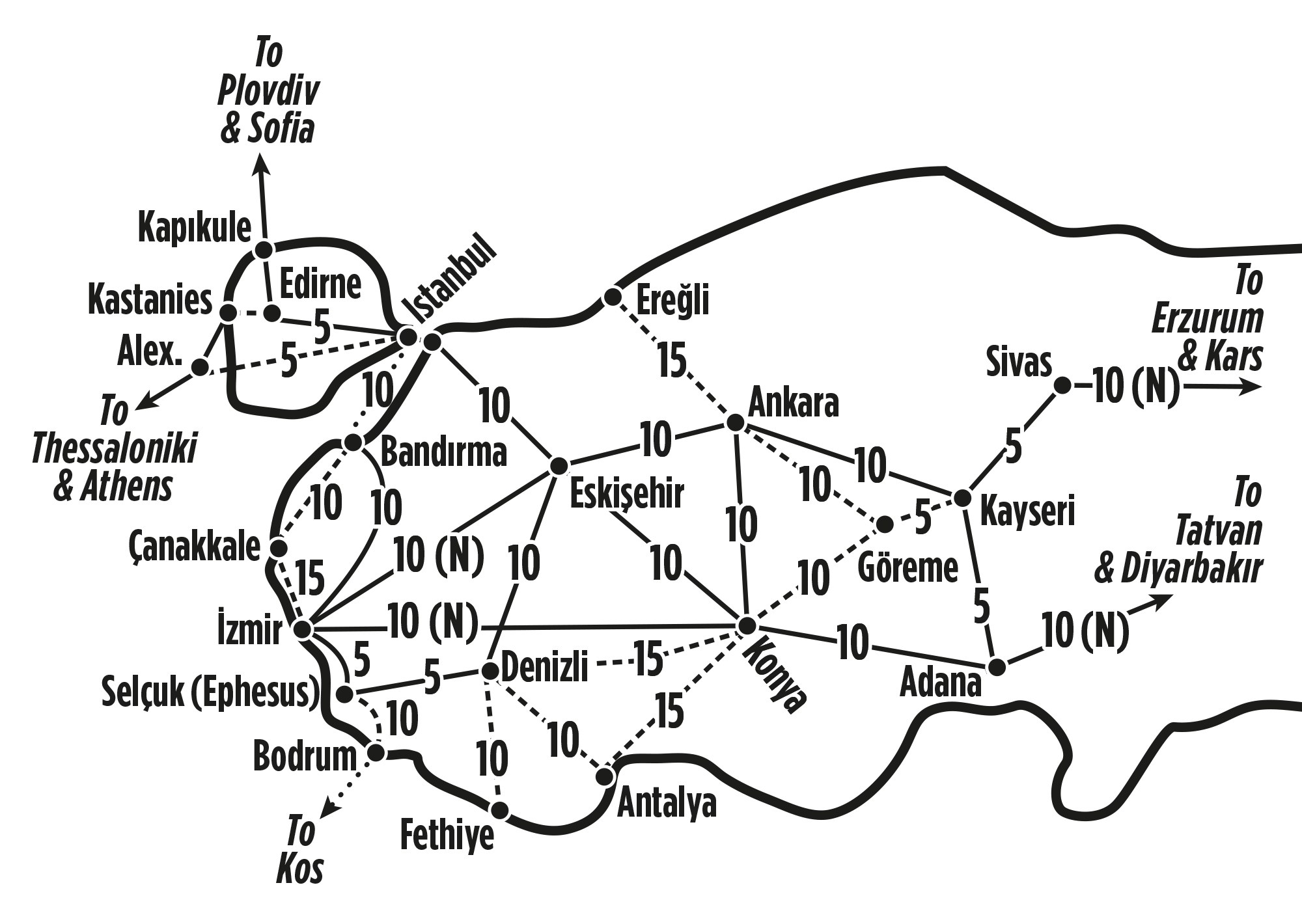Train-Fare Maps: How Much Would You Pay Without a Pass?
By Rick Steves
How much would you pay for train tickets if you didn't buy a rail pass? The maps on this page are your best tool for quickly getting a fairly accurate estimate of how much it'd cost to just pay for separate tickets for each leg of your itinerary.
What these maps show: Point-to-point, one-way, second-class train fares in $US. For first-class fares, add 50 percent. Buses (dashed lines) and ferries (dotted lines) are generally not covered by rail passes.
How to use them: Connect the dots and add up fares for your itinerary to get an approximate cost for what you'd pay in train tickets for your whole trip. Then compare that to the price of the rail pass that covers the same journeys to see whether a pass will save you money.
Full-fare vs. advance discounts: The numbers on these maps reflect the full-price, no-hassle fare you'd pay on short notice. Those willing to lock in tickets ahead can find some significantly cheaper deals. (In general, the more expensive the full-fare ticket, the more likely you can save money by booking as far ahead as possible.)
How accurate are these prices? While many routes have varying ticket prices, these maps show fares for the fastest possible connections, and the round numbers are accurate enough to indicate whether a rail pass would save money over buying tickets as you go. Prices are drawn from each country's own railway website and converted assuming an exchange rate of €1 = $1.15.
For destinations between the dots: Don't worry if one of your destinations isn't shown on any of these maps: Ticket prices are mostly based on distance, so you can estimate fares. For example, if you're going to Italy's Orvieto, about halfway between Florence and Rome, it's safe to assume the train fare to Orvieto from Florence or Rome is about half the total shown for the whole Florence–Rome stretch.


